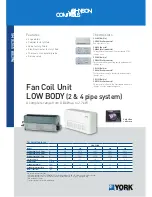
RESIDENTIAL GAS AND ELECTRIC WATER HEATER
SERVICE HANDBOOK
A.O. Smith Water Products Company
Training Department
©
2002
Ashland City, Tennessee
58
THE FIX
The ideal fix involves the use of a pressure reducing valve if supply pressures are
above 60 to 70 psi, and a properly sized expansion tank. The PRV reduces supply
pressures to 40 to 60 psi allowing an economically priced and sized expansion tank to
be used. The PRV also offers the benefit of saving water and prolonging the life of
water flow valves. The PRV is not required if the system already has one or if high
supply pressures are desired.
The PRV is installed between the check valve and the water heating system. The
expansion tank is installed between the PRV and the water heating system. Follow the
manufacturers instructions for installing the expansion tank.
Run the thermal expansion check again. The pressure should increase only slightly
then hold steady throughout the recovery cycle. The expanded water is flowing back
from the heater and into the pressurized storage bladder of the expansion tank. Air
pressure will force this water out of the expansion tank into the supply once usage
resumes.
DO NOT DEPEND ON THE T&P VALVE TO HANDLE THERMAL EXPANSION! The
T&P valve, according to the makers of those valves, was designed as an emergency
relief device only. The T&P could be subject to reduced effectiveness or failure.
FIGURE
WARNING
Thermal expansion of water, if not compensated for in system design, will lead to the
early failure of components. These failures are not covered by the manufacturer’s
warranty, so it is extremely important that everyone be aware of the causes, symptoms
and solutions to thermal expansion in a closed water heating system.



































